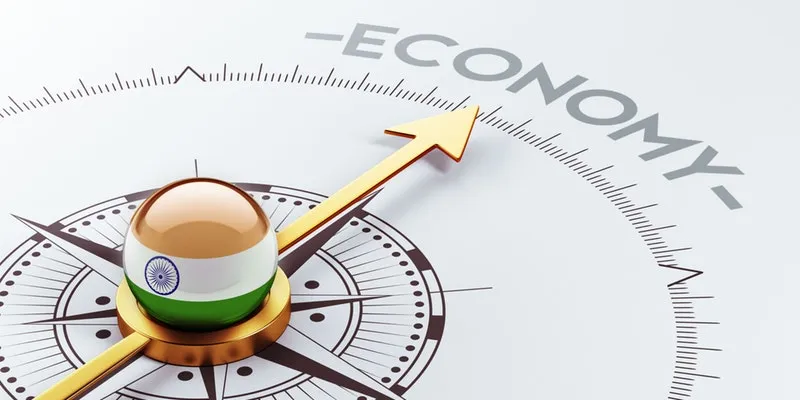Indian economy to see 10.5 pc or higher growth this fiscal: Niti Aayog VC
Speaking at a virtual conference organised by the Public Affairs Forum of India (PAFI), Niti Aayog Vice Chairman Rajiv Kumar says modernisation of the retail sector is very much on the cards.
The Indian economy is expected to grow 10.5 percent or more in the current fiscal, Niti Aayog Vice Chairman Rajiv Kumar said on Thursday.
Speaking at a virtual conference organised by the Public Affairs Forum of India (PAFI), he also said that modernisation of the retail sector is very much on the cards.
"India Purchasing Managers' Index (PMI) for both manufacturing and services has shown a very smart uptick last month. This (Indian economy) will strengthen even further," he said.
"I expect the Indian economy to grow 10.5 percent or higher in FY22," he noted.
The country's economy grew by a record 20.1 per cent in the April-June quarter, helped by a very weak base of last year and a sharp rebound in the manufacturing and services sectors in spite of the devastating second COVID wave.
The Reserve Bank of India (RBI) has lowered the growth projection for the current financial year to 9.5 per cent from 10.5 per cent estimated earlier while the IMF has projected a growth of 9.5 percent in 2021 and 8.5 percent in the next year.
Kumar asserted that the unevenness in demand across various parts of the country is not because of a lack of consumer confidence, which has come up in a significant manner, but because of certain supply constraints.
He described these constraints as "chips, ships, and global trips," which have constrained India's growth recovery.

Image Source: Shutterstock
Replying to a question, Kumar said reasons for the slump in two-wheeler sales might be the transition from internal combustion engine scooters and bikes to electric bikes and scooters.
Noting that exports create jobs, he said, "we need to double our share of global trade... and for that we might need better market access".
The Niti Aayog VC said the private sector has to work with the government to take the country forward and make development a people's movement.
He urged industrialists not to be sceptical about the government's intention because it has already taken a lot of hard decisions like the rollback of the retrospective tax.
Focus on infrastructure financing
On disinvestment and asset monetisation, Kumar said the focus is on implementation as far as asset monetisation is concerned.
"I am confident we will achieve the targets because of close monitoring at the highest level," he said.
Noting that most background work has been done on privatisation, Kumar said, "We will achieve the budgeted targets for privatisation as most background work is done and one will see more coming in".
Replying to a question on poverty, Kumar said he is of the view that going forward India needs to focus on infrastructure financing and building real estate as these have a huge multiplier effect.
"These sectors will create employment," he said, adding that the economic environment has been created for sustained recovery of jobs.
On ecommerce, Kumar noted that it was a saving grace during the pandemic.
"Modernisation of the retail sector is very much on the cards and the government will take it forward," he said, adding that, however, all stakeholders will have to abide by regulations.
Kumar said he was mystified at the declining women labour force participation though the 2019-20 Periodic Labour Force Survey pointed to a slight uptick in women workforce.
"There is no real survey to explain the reasons for a decline," he said, and urged industry to help the government to understand the drivers of female participation in the labour force.
Edited by Teja Lele








